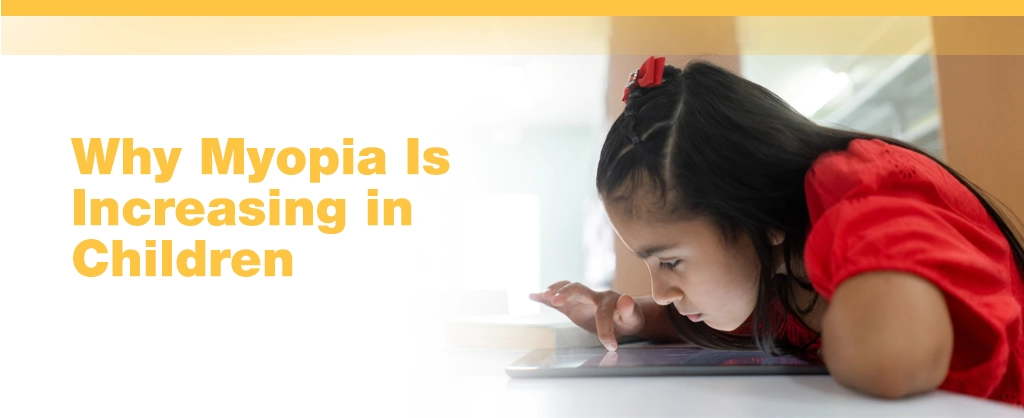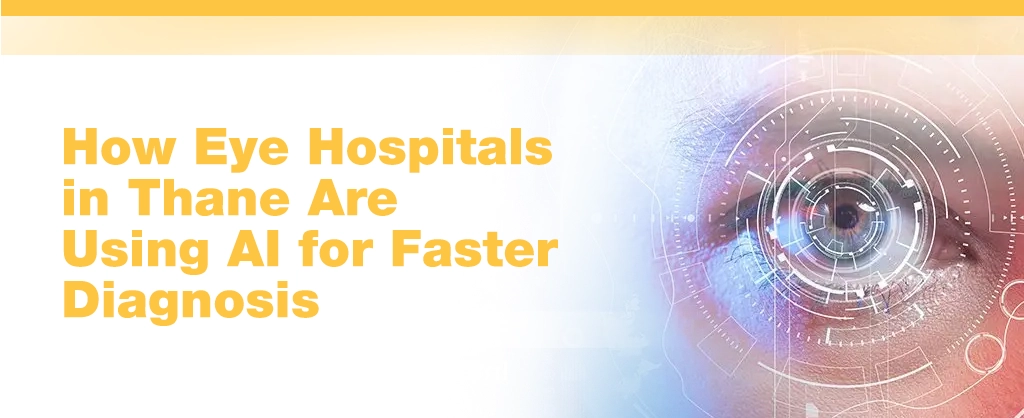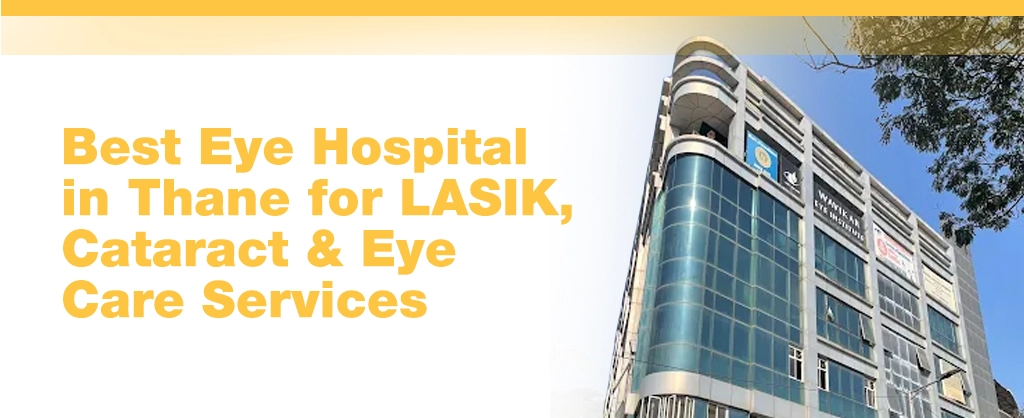Vision is one of the most essential senses, shaping how children interact with the world around them and how they develop cognitively and socially. Healthy eyes contribute not only to a child’s learning but also to their emotional and physical growth. However, the challenge lies in the fact that children may not always be able to communicate when something’s wrong with their eyes. As parents or caregivers, it becomes critical to spot the early signs of potential eye issues and seek expert help in time. In this blog, we explore common eye problems in children, their causes, and why early diagnosis is vital for ensuring your child’s future is filled with clarity and opportunity.
Read Also: Simple Eye Exercises To Improve Vision And EyesightWhy Is Early Diagnosis Important?
Children’s visual systems are still developing, particularly in the first few years of life. Early detection of eye problems in kids ensures timely treatment, which can prevent long-term vision impairments and developmental delays. Delayed treatment may lead to complications such as lazy eye (amblyopia), irreversible vision loss, or even academic challenges.
Read Also: Eye Styes Explained: Causes, Symptoms, And How To Treat ThemCommon Eye Problems in Children
Common eye problems in children can significantly impact their vision and development if left unaddressed.
1. Refractive Errors
Refractive errors are among the most common vision issues in children. These include myopia (nearsightedness), where children have trouble seeing distant objects clearly, and hyperopia (farsightedness), where they struggle to focus on nearby objects. Astigmatism is another refractive error caused by an irregularly shaped cornea, leading to blurred or distorted vision. Children with refractive errors may show signs such as squinting, difficulty reading the blackboard, frequent headaches, or holding books too close to their face. These vision problems can be easily corrected with prescription glasses or contact lenses, which a pediatric eye doctor can provide after a thorough eye examination. Read Also: Understanding Cataracts: Causes, Symptoms, and Solutions2. Strabismus (Crossed Eyes)
Strabismus occurs when the eyes fail to align properly, causing one eye to turn inward, outward, upward, or downward. Symptoms include misaligned eyes, squinting, or tilting the head to see better. Treatment may involve glasses, patching, vision therapy, or surgery.3. Amblyopia(Lazy Eye)
Amblyopia is when one eye develops poor vision because it’s not used as much as the other. Symptoms include poor depth perception, squinting, or favoring one eye. Treatment involves patching the stronger eye, vision therapy, or corrective lenses.4. Congenital cataracts
Congenital cataracts are clouded lenses present at birth, causing visual impairment. Symptoms include a white or gray spot in the eye and sensitivity to light. Surgery is required to remove the cataract, followed by corrective lenses or contact lenses.5. Eye Infections
Common infections like conjunctivitis (pink eye), styes, and blepharitis cause redness, swelling, discharge, and watery eyes. Most infections resolve with prescribed antibiotic drops or ointments. Proper hygiene can prevent recurrence.6. Blocked Tear Ducts
Blocked tear ducts prevent proper drainage, leading to excessive tearing and discharge. Symptoms include recurrent eye infections or swelling near the eye. Massaging the tear duct or minor surgery can resolve the issue.7. Ptosis (Droopy Eyelid)
Ptosis is the drooping of the upper eyelid, potentially blocking vision. Symptoms include a drooping eyelid and tilting the head to see clearly. Surgery is often needed to correct ptosis and ensure proper visual development.8. Retinopathy of Prematurity (ROP)
ROP affects premature infants and involves abnormal blood vessel growth in the retina. Symptoms are typically detected during routine screenings. Treatment may include laser therapy or cryotherapy to prevent vision loss.How to Recognize Eye Problems in Children
As children might not always complain about vision difficulties, parents and caregivers should be vigilant for signs such as:
- Squinting or rubbing eyes frequently.
- Sitting too close to the TV or holding books too close.
- Difficulty tracking objects or maintaining eye contact.
- Complaints of headaches or eye strain.
- Misaligned or crossed eyes.
What is The Role of a Pediatric Ophthalmologist
A pediatric ophthalmologist specializes in diagnosing and treating eye problems in kids. These professionals are trained to:
- Perform detailed eye exams for children.
- Prescribe corrective lenses or therapies.
- Treat serious conditions like cataracts, strabismus, or ROP.
For parents seeking expert care, consulting a pediatric ophthalmologist in Mumbai or other cities ensures that children receive the best treatment tailored to their needs.
Prevention and Early Care
Preventing eye issues and ensuring early care are essential for maintaining your child’s visual health and supporting their overall development. Here are some key preventive measures:
- Regular Eye Checkups: Schedule the first eye exam at 6 months, another at 3 years, and annually once school begins.
- Protective Eyewear: Use protective eyewear for sports or outdoor activities to prevent injuries.
- Balanced Diet: Encourage foods rich in Vitamin A, Omega-3 fatty acids, and antioxidants to support eye health.
- Good Hygiene Practices: Teach children to wash their hands and avoid touching their eyes to prevent infections.
Conclusion
Early diagnosis and treatment of eye problems in kids can make a significant difference in their vision and overall development. Recognizing signs early, maintaining regular eye checkups, and consulting a qualified pediatric ophthalmologist when needed are crucial steps to ensuring your child’s eye health. If you’re searching for expert care, consider consulting a pediatric ophthalmologist in Mumbai to give your child the best chance at clear vision and a bright future.
For expert care, consult a pediatric ophthalmologist in Mumbai at Wavikar Eye Institute to ensure your child’s vision is properly addressed and supported.
FAQs
Q1: At what age should my child have their first eye exam? A: The first eye exam should be conducted at 6 months of age, followed by checkups at 3 years, and annually once school starts.
Q2: How can I tell if my child needs glasses? A: Signs include squinting, sitting too close to the TV, holding books close to their face, or complaining of headaches.
Q3: Are eye infections in kids contagious? A: Yes, infections like conjunctivitis (pink eye) are highly contagious. Practicing good hygiene can help prevent the spread.
Q4: What is the most common eye problem in children? A: Refractive errors, such as nearsightedness or farsightedness, are among the most common eye problems in children.
Q5: Can screen time affect my child’s vision? A: Prolonged screen time can cause digital eye strain. It’s important to encourage breaks and the 20-20-20 rule to reduce strain.
Q6: How can I prevent eye problems in my child? A: Regular eye exams, protective eyewear for activities, a balanced diet rich in nutrients for eye health, and good hygiene practices are key to preventing eye issues.






